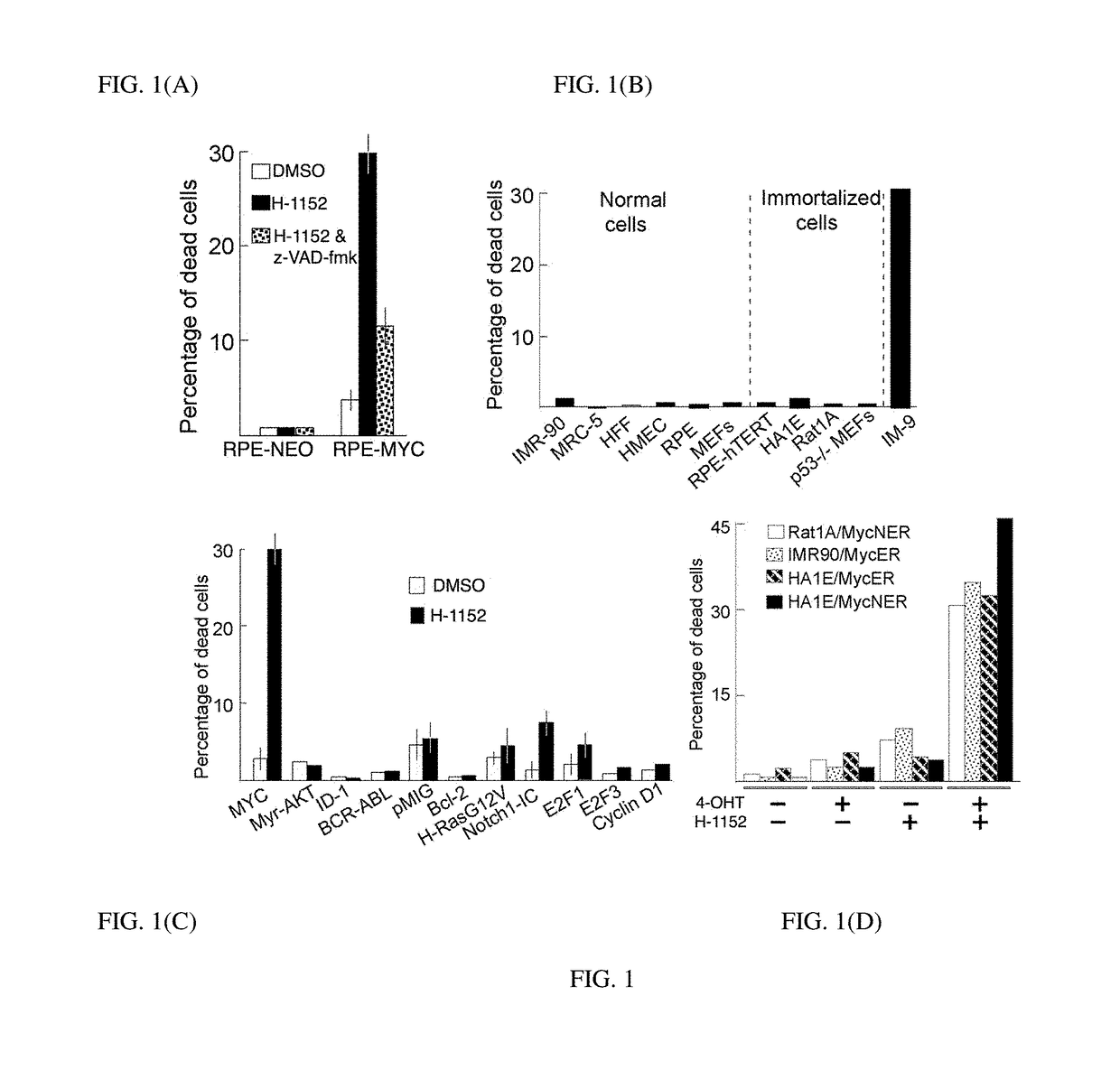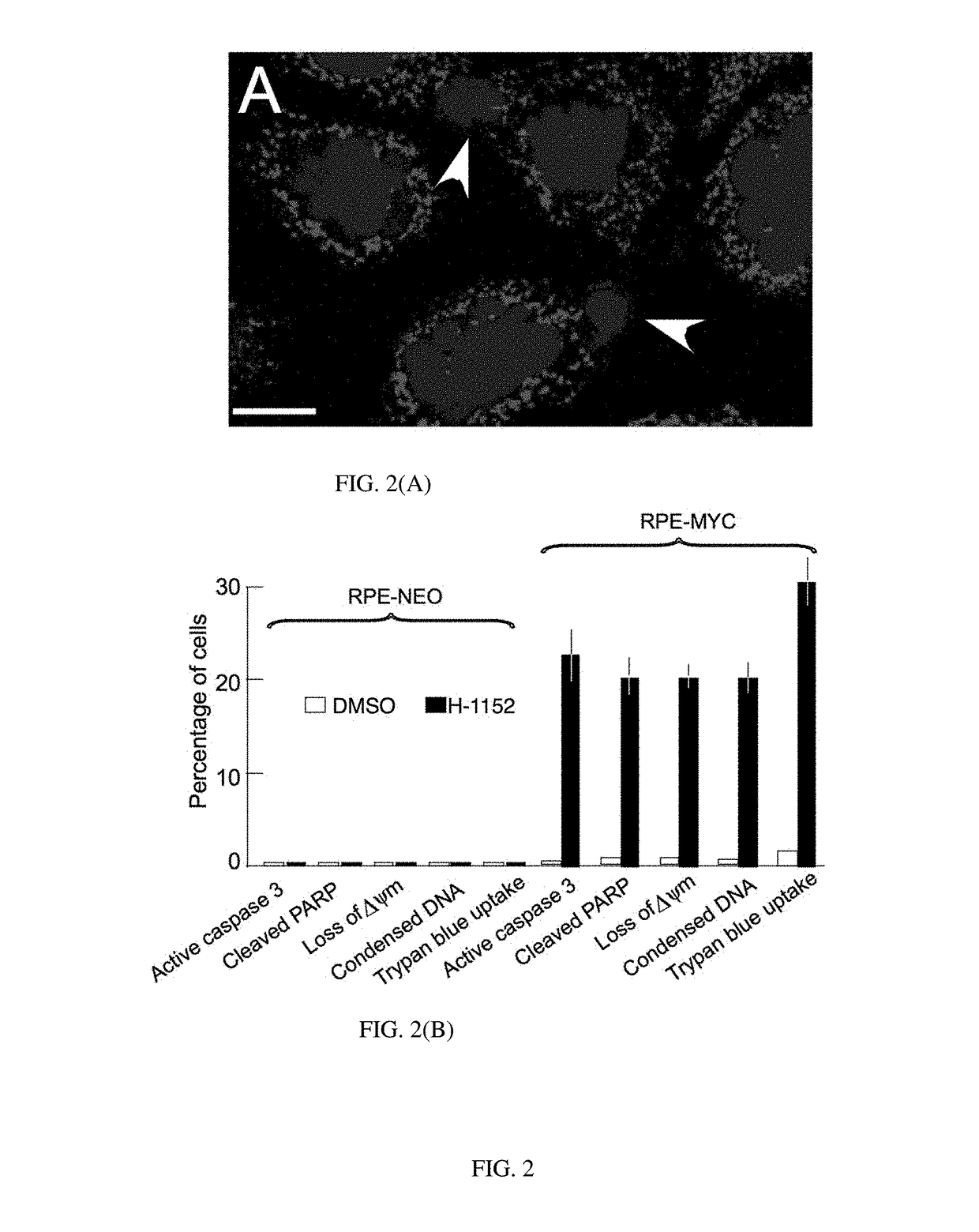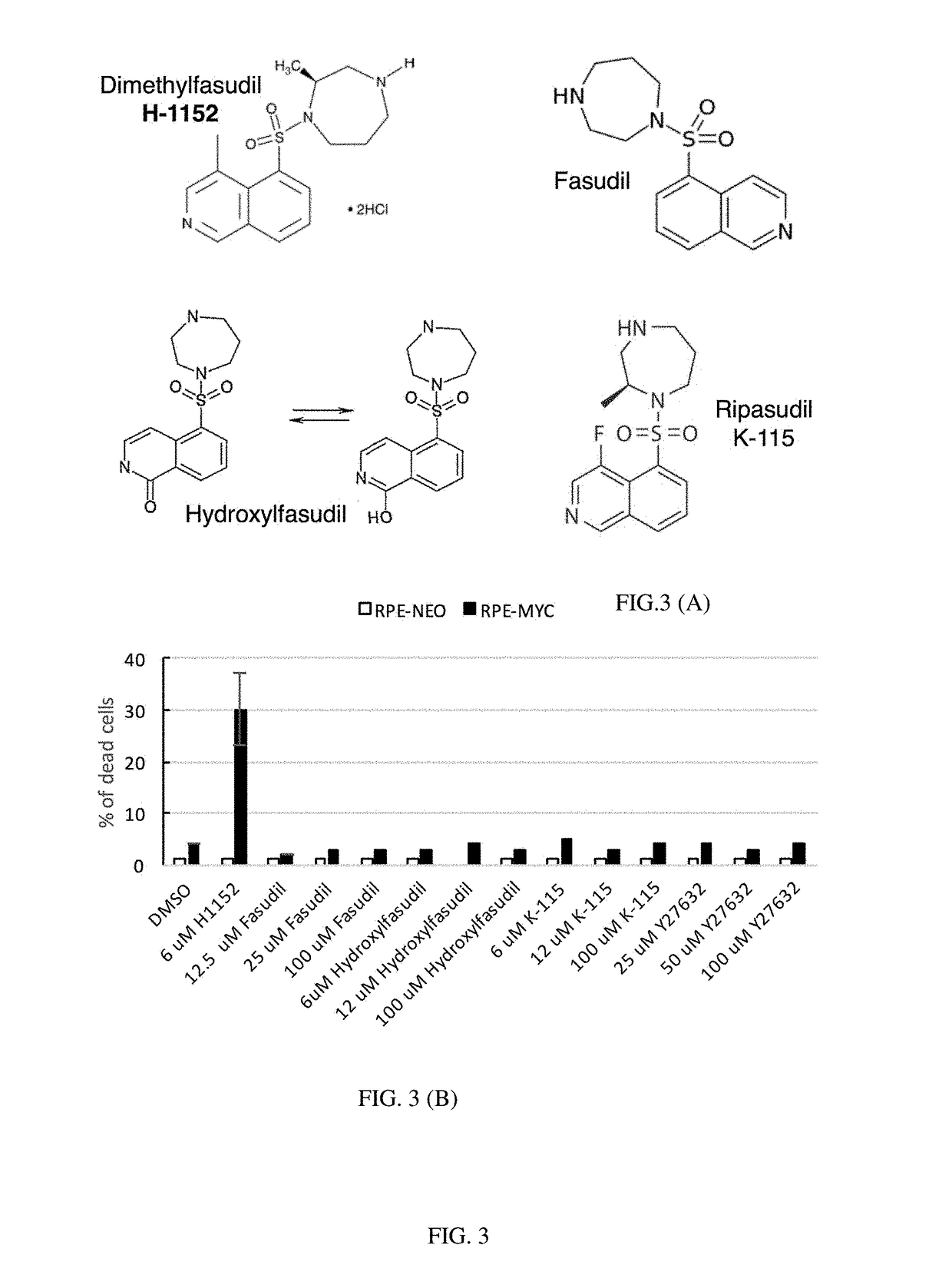Process for Exploiting Synthetic Lethality Based on OverExpression of MYC Oncogene
a technology of myc oncogene and synthetic lethality, which is applied in the direction of transferases, drug compositions, peptides, etc., can solve the problems of inability to direct target myc, inability to develop specific monoclonal antibodies, and difficulty in developing drugs that target myc oncogene, etc., to slow the proliferation rate and inhibit the proliferation of cancer cells
- Summary
- Abstract
- Description
- Claims
- Application Information
AI Technical Summary
Benefits of technology
Problems solved by technology
Method used
Image
Examples
Embodiment Construction
[0024]The invention provides methods for treatment of cancer cells using inhibitors of Rho-associated protein kinase (hereinafter “ROCK”). Specifically, the method is directed at treatment of cancer cells, especially those cells that exhibit high expression levels of the MYC oncogene using ROCK inhibitors. The contemplated method herein can be used alone or in tandem with traditional cancer treatments such as chemotherapy and / or radiation therapy.
[0025]ROCK is a family of kinases comprising of the homologues ROCK 1 and ROCK 2 that belong to the AGC (PKA / PKG / PKC) family of serine-threonine kinases. As a downstream effector protein of the GTPase Rho, ROCK is major regulator of the cytoskeleton. Based on its roles in actin depolymerization, contraction of actin fibers, and filament stabilization, ROCK activity is crucial for proper cell migration.
[0026]ROCK 1 and ROCK 2 demonstrate significant homology between themselves, sharing over 65% identity in their amino acid sequences. Signifi...
PUM
| Property | Measurement | Unit |
|---|---|---|
| volumes | aaaaa | aaaaa |
| pharmaceutical composition | aaaaa | aaaaa |
| color | aaaaa | aaaaa |
Abstract
Description
Claims
Application Information
 Login to View More
Login to View More - R&D
- Intellectual Property
- Life Sciences
- Materials
- Tech Scout
- Unparalleled Data Quality
- Higher Quality Content
- 60% Fewer Hallucinations
Browse by: Latest US Patents, China's latest patents, Technical Efficacy Thesaurus, Application Domain, Technology Topic, Popular Technical Reports.
© 2025 PatSnap. All rights reserved.Legal|Privacy policy|Modern Slavery Act Transparency Statement|Sitemap|About US| Contact US: help@patsnap.com



